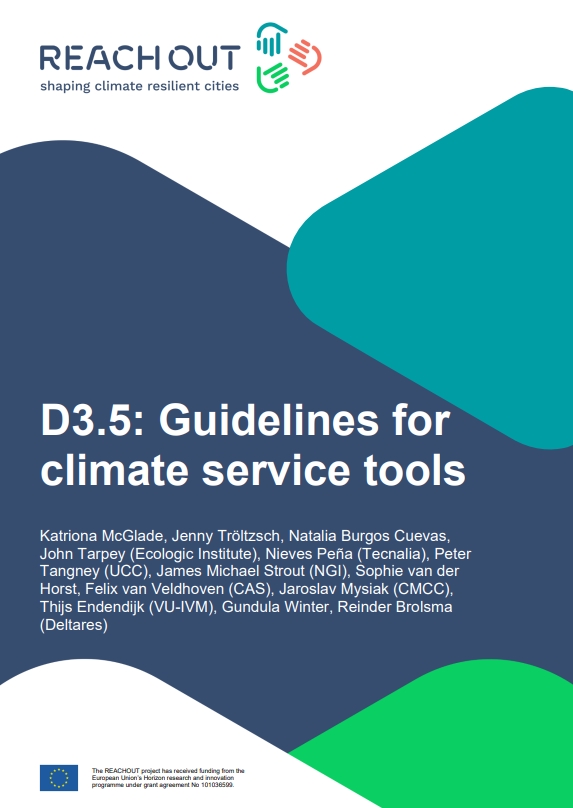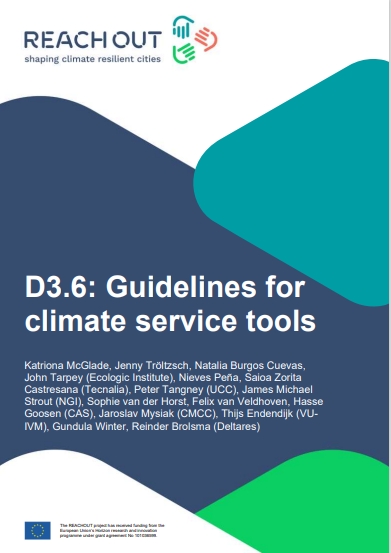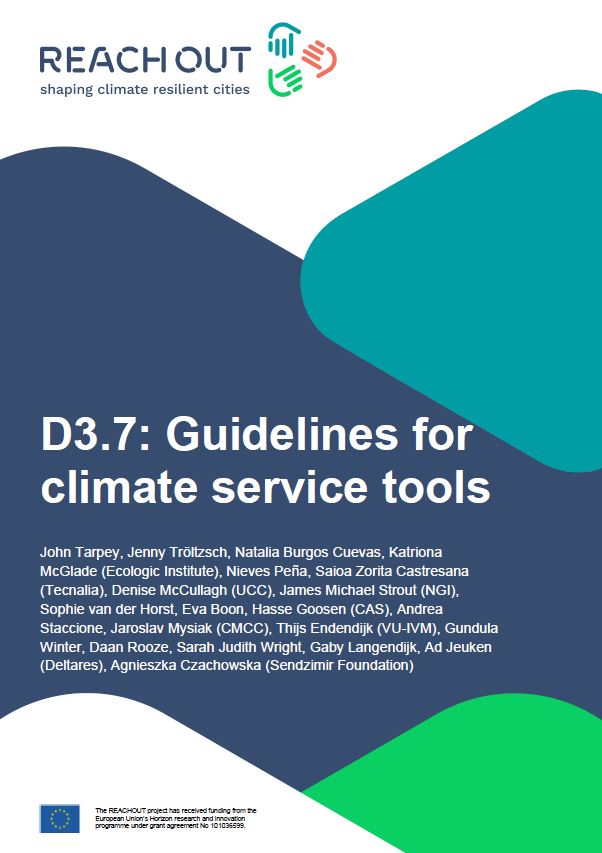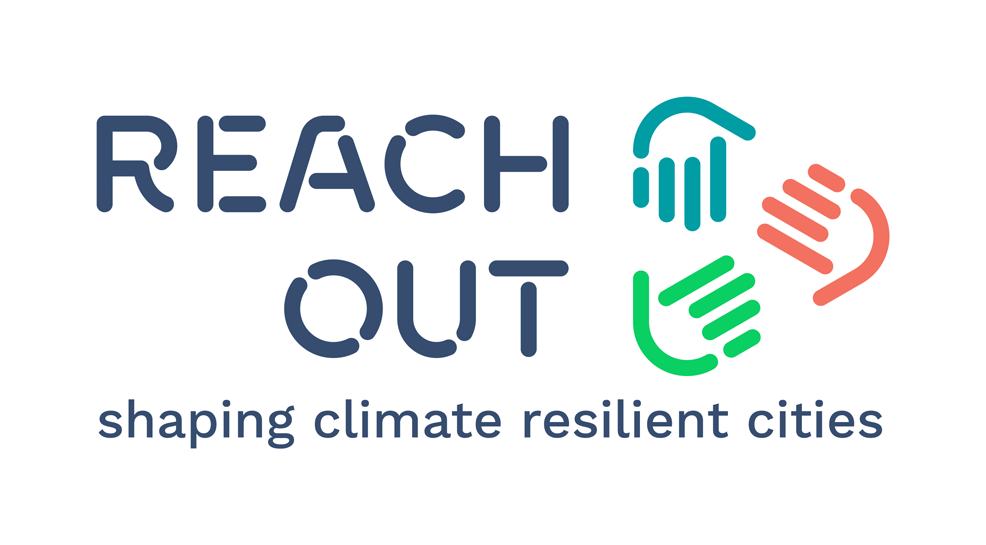Guidelines for Climate Service Tools
Deliverable 3.5 of Horizon 2020 project REACHOUT
- Publication
- Citation
McGlade K.; Tröltzsch J.; Burgos Cuevas, N.; Tarpey, J., Peña, N.; Tangney P.; Strout, J.M.; van der Horst, S.; Van Veldhoven F.; Mysiak, J.; Endendijk, T.; Winter, G.; Brolsma R. (2025). D3.5 Guidelines for climate service tools. Deliverable of Horizon 2020 project REACHOUT.
As part of the EU-funded REACHOUT project, extensive tools to support municipal climate adaptation were developed and piloted in the first project phase. The present publication "D3.5 - Guidelines for Climate Service Tools" provides an initial systematic overview of a total of twelve tools that are tailored to the challenges of urban resilience in the face of climate change. The aim of the document is to provide practical guidance and illustrate the potential uses of the tools in various phases of municipal planning and adaptation processes.
Structured classification within the Triple A framework
The tools are structured according to the so-called Triple A methodology - Analysis, Ambition and Action. The majority of the tools are in the area of analysis, for example for risk and hazard assessment (e.g. heavy rain, heat, social vulnerability). Individual applications, such as the Climate Resilient City Tool (CRCTool) or FloodAdapt, also cover ambitious target-setting and action phases. The modular structure allows cities to combine several tools and adapt them to local conditions.
Technical solutions and participatory approaches
The spectrum ranges from data-intensive, technically sophisticated models - such as for heavy rainfall modeling, heat stress analysis or social vulnerability - to participatory approaches such as Climate Impact Diagrams or the crowdsourcing module for citizen participation in hazard mapping. Each tool is described in detail in D3.5, including the target group, complexity, required input data, use cases and outputs. This is supplemented by initial experiences from use in REACHOUT City Hubs such as Milan, Cork, Athens and Logroño.
Proximity to practice through co-creation
A central feature of the D3.5 guidelines is their consistent user orientation: many of the tools were developed in direct cooperation with municipal planners, civil society organizations or scientific partners. The assessment of complexity - from "ready-to-use" to "technically demanding" - facilitates selection depending on the resources available. In addition, the co-creation approach allows for iterative improvement of the tools in direct exchange with local users.
Outlook: Solid basis for the next development steps
D3.5 forms the starting point for the dynamic further development of the climate service tools in the REACHOUT project. The next versions of the guidelines (D3.6 and D3.7) will be created on the basis of further practical experience and technical refinement. D3.5 already provides a solid foundation - both for the development of a digital toolkit and for the strategic integration of climate adaptation into municipal planning processes.







